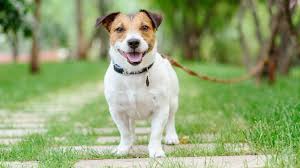
What breed of dog has dreadlocks? Best known for their long, corded coat resembling dreadlocks, the Puli is a hardworking herding dog and family companion. Energetic and lively, this mop-like dog breed hailing from Hungary appears much larger than they are due to that distinctive coat.
What causes dreadlocks in dogs? So why do dogs have dreadlocks? As we have seen in some breeds, it’s because, as the coat grows, the under coat and top coat combine to form tassels ,while in other breeds it’s the result of not brushing or combing which allows the coat to form “mats” that need to be separated from the skin.
Are Komondors born with dreads? When Komondor puppies are born they are not born with dreads, they have a short, white coat that gradually forms into fluffy curls and as the dog grows so do the curls. At around one years old the curls form into matted patches and that is when human intervention is needed to separate into individual cords.
How do you remove dog dreads? Push all of the fur surrounding the dreadlock down to clearly separate it from the rest of the fur. Pull the dreadlock up lightly to lift it away from your dog’s skin. Turn the clippers on and cut through the bottom of the dreadlock to safely remove it.